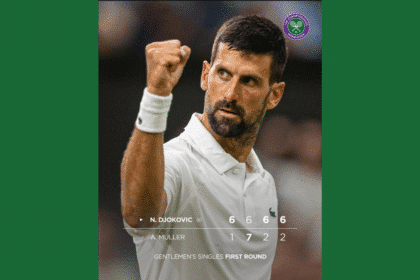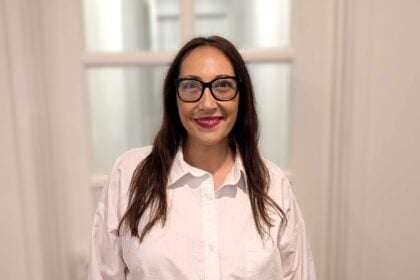A Western Sydney University academic, who worked on a report that has been used by the Government to justify excluding YouTube from an under-16 account ban, believes social media age regulation should focus on platform features rather than picking and choosing platforms.
Professor Amanda Third co-authored the report, ‘Consultations with young people to inform the eSafety Commissioner’s Engagement Strategy for Young People’, in 2021.
It has been used by the Albanese Government as evidence that YouTube is “an important source of education and informational content, relied upon by children, parents and carers and educational institutions” that “contrasts substantially with other content streaming services”.
Third told B&T that the approach to exemptions from new legislation to age gate social media needs to create “a level playing field” by identifying which platform features are most likely to cause harm and requiring platforms to design those features out of the services children use. Third says that governments need to incentivise platforms to centre children’s needs and design services that are not just safe but optimal for children’s wellbeing.
“What we need is to create standards that clarify what we want to see in our platforms for children,” she said. “Then companies can either decide that the bar is too high to jump over, or they can decide to build specific products targeted to children that comply with what society says is appropriate.”
“One of my key concerns is that we don’t have an exclusion framework that’s based on platform features grounded in knowing the evidence base around which platform features are harmful, and which ones are not…instead we’ve got a kind of ‘pick and choose’ approach to regulation.
“Many of these platforms share similar features, but they’ve branded themselves in particular ways and the perception is that this one’s bad and that one’s good, and it’s actually not that straightforward. We shouldn’t be talking about which platforms should be in and which platforms should be out; we should be talking about which features are good and which features are potentially harmful using evidence from user experience.”
Third said she sympathises with the government and congratulated it for being bold. She also said that now the government has determined it will restrict user account access to people under 16, she would like to see social media adopt a “safety by design” approach that incentivises tech companies to make platforms child safe.

A spokesperson for the office of Communications Minister Michelle Rowland told B&T the initial exclusions to the social media minimum age obligations, which come into effect in December 2025, include messaging and gaming apps, as well as social media type services that function for the primary purpose of addressing young people’s health and education needs.
When initially announced last year, the YouTube exemption was proposed but was only quietly rubber stamped recently.
“The Australian Government believes this decision reflects the common expectations of the Australian community – which is our focus,” the spokesperson told B&T.
“If community sentiment changes over time, our laws should be updated to reflect this. That’s why the Social Media Minimum Age legislation has a two-year review point – this is novel reform and we are committed to ensuring this legislation is keeping pace with a rapidly evolving social and digital ecosystem.”
Last week, social media companies Meta, TikTok and Snapchat railed against the Government’s YouTube exclusion, and shared their submissions to a stakeholder consultation about the exemptions, including a section that focuses on YouTube.
The ‘Online Safety Rules – Services excluded from the social media minimum age obligation’ discussion paper argues that YouTube should be exempt because it is an important source of education and informational content for children, which it argues contrasts substantially with rivals.
Tech rivals strongly contest this claim and have gone public to rebuke the government’s decision to exempt YouTube before the consultation process has concluded.
B&T understands that the consultation hasn’t been binned, as some have suggested, and that the findings should be presented in the middle of the year, likely after the next federal election,. However, no indication has been given that the findings of the consultation will influence the Government’s current thinking until a review two years after the legislation comes into force.
‘Anti-competitive, illogical, unfair’
Meta has three primary concerns about the Government’s exemption of YouTube. Firstly, YouTube is the most popular social media service for under 16s and its exclusion contradicts the Government’s intention to improve online safety.
It said that YouTube has features that are addictive, increase time on platform and potentially expose young people to “significant risks” of being exposed to harmful content.
The third gripe is that the age ban law only applies to children holding accounts. Young people can still view YouTube’s educational content without logging into the platform, which raises questions about why they are being excluded on education and information grounds.
Meta also questions how much content on YouTube is education. A Common Sense Media study found that young children primarily watched YouTube content that had no or weak educational value (75 per cent), compared to videos classified as educational (25 per cent — of which only 5 per cent taught topics at a developmentally appropriate level).
“We are concerned the government’s rapid, closed-door consultation process on the minimum age law is undermining necessary discourse,” a spokesperson said.
“A young person with a YouTube account experiences the very features cited by the government to justify the law, including algorithmic content recommendations, autoplay, social interaction features and persistent notifications. YouTube’s exemption is at odds with the purported reasons for the law and we call on the government to ensure equal application of the law across all social media services.”
Snap said it believes that YouTube is not being held to the same standards as its rivals and that it advocates platforms be encouraged to implement ‘safety by design’ features to make design decisions that improve online safety for teens.
“For the social media minimum age to become a credible and successful example of technology regulation, the Government will need to demonstrate an equitable and impartial application of the law so that all services are held to a consistent standard,” its submission stated.
“We see no reason why preferential treatment should be given to any specific companies and services through the rules in such a way that those companies and services do not need to satisfy the grounds for exclusion that all other services must be measured by. As above, we believe the eSafety Commissioner’s risk assessment should inform the Government’s approach to exemptions from the law, rather than arbitrary exclusions for certain companies and platforms.”
TikTok slammed the Government’s exemption of YouTube as a “sweetheart deal” that is “illogical, anti-competitive, and short-sighted”.
It says that YouTube’s features are like TikTok and Instagram Reels (see above), and that its exemption is akin to “banning the sale of soft drinks to minors but exempting Coca-Cola”.
“What is clear is that the Government has begun its analysis from the starting position that YouTube must be exempt and then attempted, half-heartedly, to reverse-engineer defensible supporting evidence. The results leave much to be desired,” TikTok submission stated.
“The Government’s standalone, named exemption for only one platform, is irrational and indefensible… a sweetheart deal for just one platform won’t help the Government protect kids online; it will only hurt young Australians in the long run.”
TikTok argues the exemption provides Google with near monopoly powers in providing social media services for children.
Google did not respond to B&T’s request for comment at the time this article was published.
Parental anxiety
For Australian children and parents, the stakes of regulating social media are high. Professor Third, who is a co-director of Young and Resilient Research Centre at Western Sydney, said the government has a tricky job in trying to balance protecting children from online harm with the benefits they derive from social media, such as education, communication and engaging with a diverse range of content.
“What we’ve got now is a very emotional national debate. A lot of parents are extremely worried about some of these things and the debate, unfortunately, has really stoked parental anxieties,” she said. “They worry about the impacts of social media on their children.”
“The government is now under significant pressure to deliver a regulatory environment that’s going to solve all the problems, and unfortunately, no single piece of regulation is going to do that. It requires an ecosystemic approach and everybody working together.”
Third said the government and other stakeholders should do more to provide parents with strong guidance around these issues and open a discussion about what parents can do to safeguard their children.
“We haven’t had a reasonable conversation that reminds parents that being a good parent and role model counts. Children translate the moral frameworks they’ve developed at home into their online worlds and by sharing your values, reiterating those with your children, you’re already doing the lion’s share of the work to set the tone.”
Big tech lobbying efforts to quash YouTube’s exemption may prove fruitless in the short-term, but in the meantime, there are a lot of other areas in which online safety can be improved.









